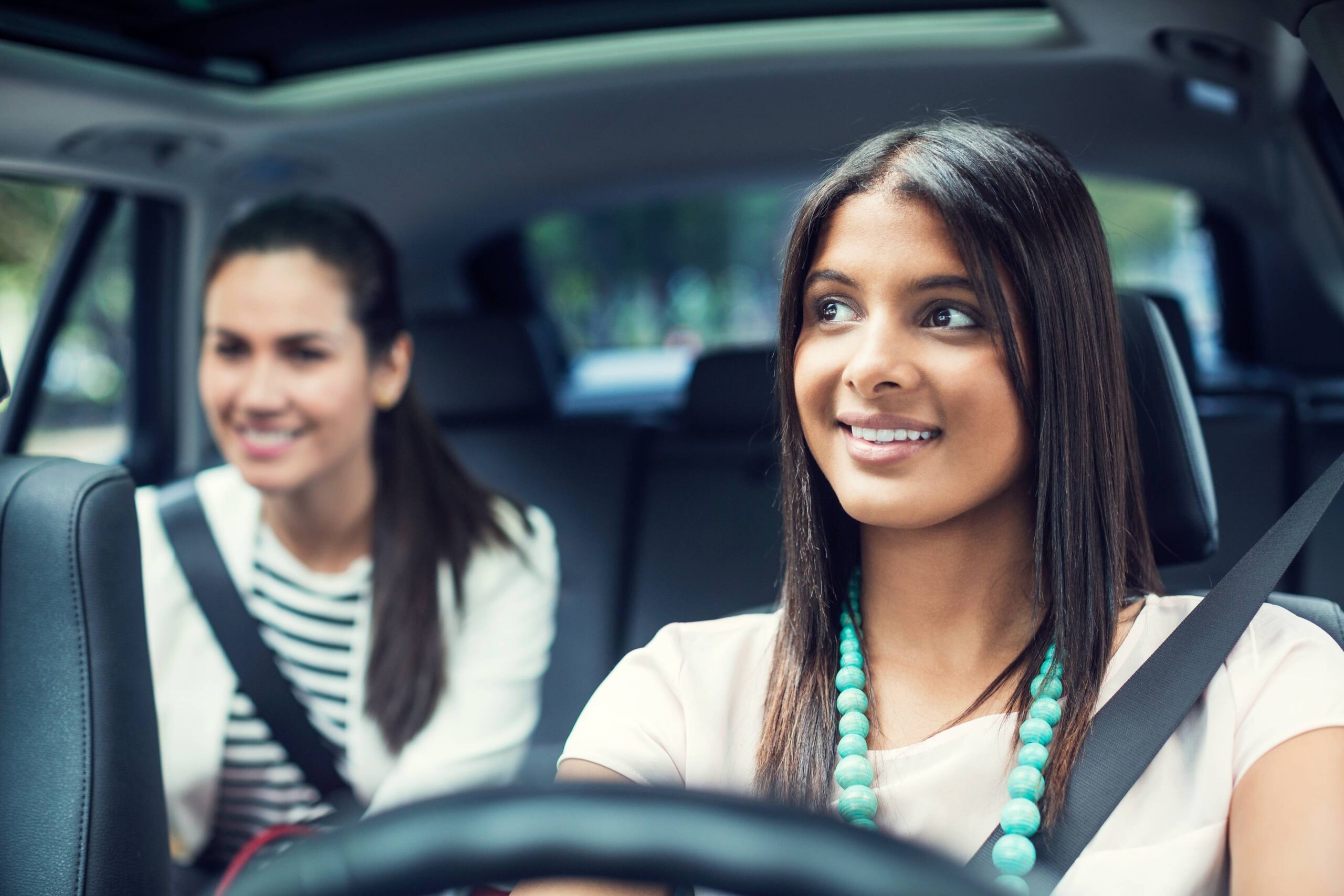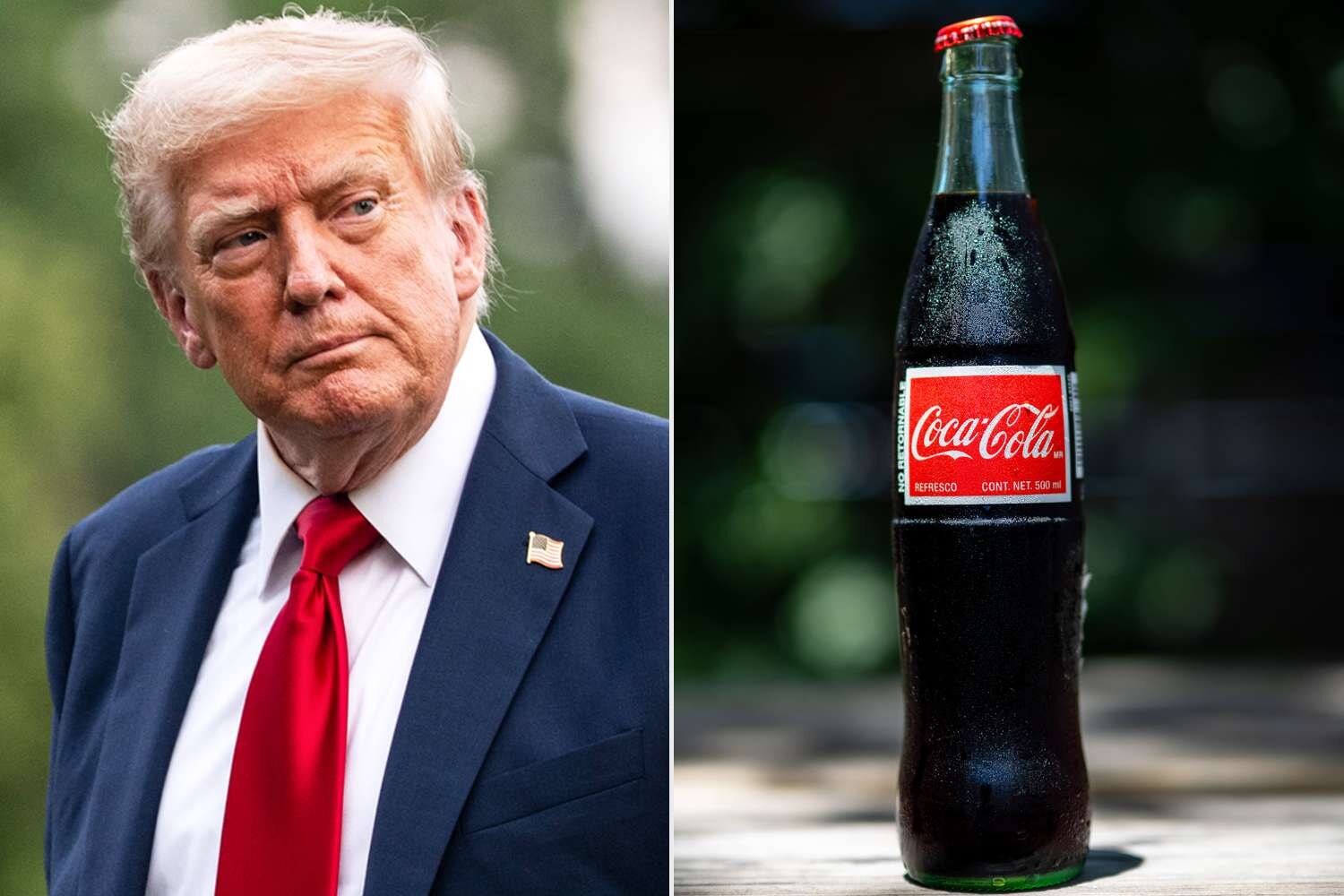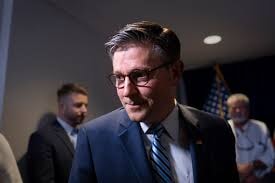
Tesla's Robotaxis Have Arrived: Here's Everything You Need to Know
These are crazy.
Published June 30, 2025
Advertisement
Advertisement
1. The Robotaxi Launch: A Turning Point for Tesla

Tesla’s much-anticipated robotaxi rollout has finally arrived, marking a dramatic moment in the company’s turbulent journey through the electric vehicle landscape. After years of bold promises and shifting timelines, Elon Musk unveiled the first pilot fleet of robotaxis in Austin, Texas—a modest group of driverless Model Ys, each ferrying select riders on geofenced routes for a meme-worthy $4.20 fare. This pilot, closely watched by the industry and investors alike, is more than just a tech demo—it represents Tesla’s urgent bet that autonomous driving will revive flagging growth, restore lost margins, and reignite its reputation for disruptive innovation. Tesla’s vehicle lineup is aging, profit margins are shrinking, and competition in the EV space is intensifying, especially from Chinese rivals and well-funded legacy automakers. The company’s once-unassailable lead is now being eroded as the EV market matures, and Tesla’s brand image has suffered amid Musk’s increasingly polarizing public persona and political entanglements. For Musk and his followers, the robotaxi project is Tesla’s “second act”—a chance to pivot from a troubled hardware company to a software-powered mobility platform. If successful, robotaxis could turn every Tesla into a revenue-generating asset, justifying the sky-high valuation that Wall Street has long assigned to the company. But the stakes couldn’t be higher: with car sales softening worldwide, Tesla needs the robotaxi vision to succeed—or risk falling back into the ranks of ordinary automakers. With the pilot now live, the next few quarters will determine whether Tesla can make good on its autonomous ambitions or if its future will remain firmly tethered to conventional car sales. As Musk himself put it, this launch is “the culmination of a decade of hard work”—but it’s also the beginning of Tesla’s biggest gamble yet. How far these robotaxis can drive will ultimately shape how far Tesla can go as a company.
Advertisement
2. Inside the Austin Pilot: Limited, Monitored, and Not Quite Driverless

Tesla’s initial robotaxi launch in Austin was defined by caution and strict controls, with each ride monitored by a company employee seated in the front passenger seat—dubbed the “safety monitor.” Unlike the sci-fi dreams of a truly empty vehicle, these rides still require a human presence, and the cars operate only within tightly geofenced areas of the city, carefully avoiding airports and complex intersections. The service is currently invite-only, targeting a small group of analysts, influencers, and shareholders, and features a central touchscreen interface for riders to control key aspects of the journey. Every ride is charged at a flat $4.20, a nod to Musk’s fondness for meme culture, but this price is likely to rise with broader rollout. While the cars are billed as “driverless,” the presence of the safety monitor is a practical and regulatory necessity, providing an emergency failsafe in case of malfunction or confusion. Passengers are required to sit in the back, and several options are available via the app or in-car screen, such as “pull over” or “stop in lane,” along with a “support” button that connects to Tesla’s remote team. For now, the pilot is capped at around 10-20 vehicles and will not operate in bad weather or navigate challenging intersections. These restrictions reflect both the technical limitations of Tesla’s current system and the ongoing scrutiny from safety regulators. Influencers and early riders reported smooth experiences overall but did note moments of confusion, including abrupt stops and the occasional lane error. Tesla’s launch may seem underwhelming compared to the hype, but internally, it’s a critical test bed for refining the technology and gathering real-world data. The next phase will require scaling up both the fleet and the capabilities of its autonomy software, all while ensuring safety and regulatory compliance.
Advertisement
3. Stiff Competition and the Race to Autonomy

Tesla enters the robotaxi market late, with formidable competitors already established in several major cities and international markets. Waymo, owned by Google’s parent company Alphabet, has logged millions of fully driverless miles with no human safety monitors in Phoenix, San Francisco, and Los Angeles. Amazon’s Zoox, GM’s Cruise, and other startups are also vying for leadership, leveraging advanced sensor arrays, purpose-built vehicles, and partnerships with ride-hailing services. Tesla’s approach is notably different: it relies on camera-based “vision-only” technology, eschewing lidar and radar used by its rivals, betting this will ultimately be cheaper and easier to scale. The competitive gap is clear, however—Waymo and Zoox already offer fully autonomous, commercially available rides in multiple cities, while Tesla’s system remains tightly controlled and supervised. Despite these challenges, analysts argue that if Tesla can deliver reliable autonomy at scale, the financial upside could be transformative, potentially adding hundreds of billions in market value. But there is deep skepticism, too, with UBS and other banks warning that much of the robotaxi promise is already “priced in” to Tesla’s stock. Morgan Stanley and Wedbush are bullish, seeing the robotaxi platform as Tesla’s “golden age” and the key to future profitability. Meanwhile, critics point out that years of missed deadlines and unfulfilled promises haunt Musk’s record on autonomy, and real-world performance remains the only measure that matters now. If Tesla can leapfrog competitors with a vision-only platform, it will change the economics of autonomous mobility. If not, the company risks falling further behind as others continue to rack up miles and regulatory approvals.
Advertisement
4. Safety, Scrutiny, and Regulatory Headwinds

Safety remains the biggest hurdle for Tesla’s robotaxi ambitions, both technically and politically. Almost immediately after launch, videos circulated on social media showing Tesla robotaxis making questionable maneuvers—driving on the wrong side of the road, abrupt braking near police vehicles, and dropping off passengers in busy intersections. Such incidents prompted the U.S. National Highway Traffic Safety Administration (NHTSA) to contact Tesla and open a review into the new service. Tesla claims its vehicles are certified to meet existing federal standards, but the NHTSA does not pre-approve autonomous systems and investigates only after incidents or complaints arise. The regulatory environment is especially complicated under the current federal administration, which has slashed the workforce of safety regulators and left the AV sector largely self-governed. Texas, the site of the pilot, is expected to introduce new AV permit requirements by September, potentially complicating future expansion. Federal reviews and investigations into Tesla’s Full Self-Driving (FSD) system remain ongoing, with previous crashes and a fatal pedestrian incident still under scrutiny. Unlike its rivals, which use redundant sensing technologies, Tesla’s bet on vision-only autonomy is seen by some experts as riskier and harder to perfect in the messy real world. For now, the combination of human safety monitors, geofencing, and restricted use cases serves as a safeguard, but these are interim solutions, not long-term answers. The stakes are enormous: any major accident could set back Tesla’s efforts by years, damage public trust, and invite a wave of tougher regulation. Balancing rapid innovation with the highest safety standards will determine whether Tesla’s robotaxi experiment can grow beyond its Texas testbed.
Advertisement
5. Wall Street’s High-Stakes Gamble

Financial markets have tied much of Tesla’s lofty valuation to the potential of its autonomy and robotaxi business, far beyond its traditional car sales. According to RBC Capital Markets and Morgan Stanley, robotaxis and Full Self-Driving together account for the majority of Tesla’s long-term value proposition. If Tesla can build a profitable, recurring revenue platform around robotaxis—turning every car into an income-producing asset—it would justify the company’s premium price-earnings multiples. Grand View Research estimates the global autonomous ride-hailing market could reach $100 billion by 2030, with robotaxis alone topping $45 billion. Tesla’s ability to grab a slice of that market is critical for future growth, especially as car sales plateau and margins decline. Despite Monday’s 10% surge in Tesla’s stock price, many analysts remain cautious, warning that the company’s share value is already buoyed by unproven hopes of autonomy at scale. Skeptics highlight that the technical, regulatory, and reputational risks are substantial, and delays or setbacks could erase much of Tesla’s market premium. Still, for many long-term investors, the robotaxi launch is a signal to “take the medicine now” and hold on for potential future rewards if Musk’s vision is realized. Any real success in robotaxis could finally deliver the scalable, high-margin business Tesla needs to sustain its growth narrative. If not, Tesla could face a dramatic revaluation, falling back in line with traditional automakers. In the coming quarters, investors will be watching not just for more robotaxis on the road, but for evidence that the business is moving from pilot to profit.
Advertisement
6. Technical Challenges and Roadblocks

Building a truly autonomous fleet is a daunting technical challenge, and Tesla’s pilot has already revealed the system’s current limitations. Unlike rivals that use a suite of sensors, Tesla’s reliance on cameras alone poses unique hurdles, particularly in complex and unpredictable urban environments. The robotaxi test vehicles are forbidden from operating in bad weather or at difficult intersections, reflecting the software’s current constraints. Videos from early rides show that the cars can make unorthodox decisions, sometimes struggling with real-world scenarios such as emergency vehicles or complicated traffic. Tesla’s Full Self-Driving feature, which underpins the robotaxi platform, has been controversial for years, with several high-profile accidents and ongoing federal investigations. Musk claims that the robotaxi pilot uses a more advanced, safer version of the system, but analysts and regulators are not convinced the leap is enough. For now, every ride is closely monitored—both by a human in the car and by Tesla staff remotely—giving the company a chance to gather critical performance data. However, transitioning from this tightly controlled pilot to a fully autonomous, widely available service will require enormous advances in both software and regulatory acceptance. Technical glitches or high-profile failures could set the entire program back, damaging Tesla’s reputation as a technology leader. Musk’s long history of missed autonomy deadlines remains a source of skepticism, with critics quick to point out the chasm between vision and execution. Ultimately, only consistent, safe operation at scale will silence the doubters and convince the public and regulators alike.
Advertisement
7. Consumer Experience: Features, Flaws, and Feedback

Early users and influencers invited to test Tesla’s robotaxi service described a futuristic, if sometimes awkward, experience. Riders enter the back seat, greeted by an app interface that syncs with personal media accounts—Spotify, for example, plays directly through the car. The central touchscreen in the back allows riders to start or end trips, select destinations, request support, and even leave reviews with a playful, Muskian twist. Novelty features include quirky touches like the hedgehog “Just kidding” message when trying to tip the car, reflecting Tesla’s irreverent brand persona. The price is set low for now, but likely to increase with a full rollout; early testers enjoyed the novelty of the ride, but also noted restrictions and the presence of the safety monitor. Not all feedback has been positive: videos circulating online highlighted abrupt stops, lane confusion, and a reliance on the safety monitor for assurance. Tesla claims that, aside from these incidents, the vast majority of rides were smooth and uneventful—a crucial point as the company looks to build public trust. Analysts believe the real test will come when the service opens to the wider public and must handle unpredictable, unscripted urban traffic. Tesla has made it clear that the current setup is temporary, with the ultimate goal of a fully autonomous, unmonitored fleet. For now, though, the experience remains a mixture of excitement, curiosity, and cautious optimism, both for riders and for the company itself. How Tesla addresses feedback and continues to improve will determine how quickly the robotaxi dream becomes a safe, mainstream reality.
Advertisement
8. The Policy Vacuum: Regulation Lagging Behind Innovation

Tesla’s robotaxi launch has exposed a yawning gap between rapid technological innovation and the slow pace of regulatory response. Federal agencies like NHTSA have the authority to investigate incidents but lack a proactive framework for approving or supervising autonomous vehicle rollouts. Under the current administration, thousands of federal safety jobs have been cut, further weakening oversight and leaving companies to “self-certify” the safety of their vehicles. States like Texas have been friendly to AV pilots, but new permit requirements taking effect in September could add a layer of complexity and bureaucracy. Other cities and countries have already seen millions of fully autonomous miles, and regulators globally remain divided on whether these systems are safer than human drivers. The absence of clear national standards has resulted in a patchwork of local rules, creating both opportunities and risks for companies like Tesla to expand at their own pace. Waymo and other rivals have already navigated this regulatory maze, but Tesla’s high-profile status and past controversies mean it will likely face extra scrutiny. Industry analysts warn that one major incident or public outcry could trigger a wave of restrictive regulation, stalling the sector’s growth. The robotaxi experiment is now as much a policy story as it is a technology one, with lawmakers, regulators, and the public all playing a part in the outcome. For Tesla, balancing aggressive innovation with cautious compliance will be a defining challenge in the coming months. Only with clear, effective oversight can the promise of safe, accessible robotaxis be realized for the general public.
Advertisement
9. The Road Ahead: Expansion, Challenges, and Uncertainties

Tesla’s roadmap for robotaxis is ambitious, with plans to expand beyond Austin to other major U.S. cities in the coming years. Musk has declared that hundreds of thousands of self-driving Teslas could be on American roads by the end of 2026, serving as on-demand taxis in cities like San Francisco, Los Angeles, and San Antonio. However, each step toward expansion faces unique hurdles, from technical glitches and regulatory delays to fierce competition and shifting consumer expectations. Other companies continue to race ahead with purpose-built vehicles, full autonomy, and partnerships with ride-hailing platforms, threatening to squeeze Tesla’s market share. Tesla’s brand remains strong, but recent controversies and growing political polarization have dampened its universal appeal. The company’s traditional automotive business, while still large, is no longer driving the narrative—robotaxis are now the core of Tesla’s growth story. Whether the company can execute at scale will determine whether it can reclaim the “tech stock” aura that once set it apart from legacy automakers. Each pilot, each city, and each ride will be scrutinized for both progress and setbacks as Tesla pushes the boundaries of what’s possible in urban mobility. Investor confidence, regulatory approval, and public perception will all converge to shape Tesla’s fortunes in the next phase. The company is betting that its unique approach will pay off with lower costs, faster scaling, and a larger slice of the autonomy pie. As the world watches, Tesla’s robotaxi project will either become the company’s greatest success—or its most high-profile stumble.
Advertisement
10. From Hype to Reality: Tesla’s Moment of Truth

The launch of Tesla’s robotaxi fleet is a pivotal moment not just for the company, but for the future of transportation and urban mobility. After years of missed deadlines, technical hurdles, and sky-high expectations, the Austin pilot is the first tangible step toward a fully autonomous ride-hailing network. The stakes are enormous: if Tesla can scale up, deliver safe and reliable service, and secure regulatory approval, it will set a new standard for the industry. But for now, the service remains small, carefully monitored, and limited in scope—a test run for the far bigger ambitions that lie ahead. Every ride, every mile, and every social media post is under the microscope as investors, rivals, and the public weigh whether Tesla can deliver on its promises. The company must convince skeptics, reassure regulators, and keep innovating in the face of relentless scrutiny and fierce competition. Ultimately, Tesla’s robotaxi project will rise or fall on its ability to move from pilot programs and hype cycles to real-world adoption and profitability. The next few quarters will be critical, as Wall Street looks for evidence that the vision is translating into sustainable revenue and public acceptance. As robotaxis hit the streets of Austin, the world is watching to see if this experiment can truly change how we move—or if it will become just another chapter in the long, turbulent saga of autonomous vehicles. In the end, the success or failure of Tesla’s robotaxis will define not just the company’s future, but the pace of progress for the entire mobility revolution. The question remains: Can Tesla turn decades of dreams into the everyday reality of the world’s roads?
Advertisement
Advertisement
You May Also Like






